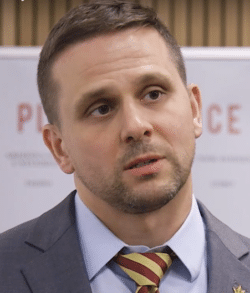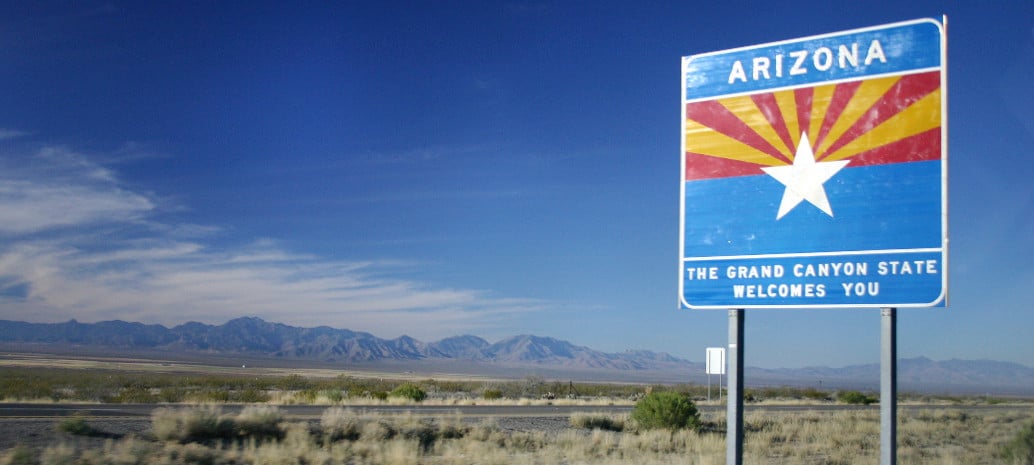by Dr. Wes Herche
 Some politicians, professors, and industry practitioners walk into a bar and the bartender says, “so what’s the future of energy in Arizona?”… No, this isn’t the setup to a joke, and actually there wasn’t a bar, but rather an engaging public discussion hosted by the Julie Ann Wrigley Global Institute of Sustainability at Arizona State University (ASU).
Some politicians, professors, and industry practitioners walk into a bar and the bartender says, “so what’s the future of energy in Arizona?”… No, this isn’t the setup to a joke, and actually there wasn’t a bar, but rather an engaging public discussion hosted by the Julie Ann Wrigley Global Institute of Sustainability at Arizona State University (ASU).
Kris Mayes, former Commissioner for the Arizona Corporation Commission (AZCC) that regulates power utilities in Arizona, opened her comments by saying, “the commission is one of most powerful branches of government in Arizona and perhaps also the one people know the least about.” Mayes’s insightful comment might also serve as a good metaphor for describing public sentiment on energy in Arizona and around the country. Energy is such a powerful and integral part of every aspects of our lives; but the complex system of producers, regulators, and consumers of energy is usually not a major focus of the office water cooler conversation.
But before we can understand the future of Arizona’s energy transition, we have to understand a little about its past and present. Formed with the establishment of Arizona statehood in 1912, the AZCC is responsible for approving the filing for all corporations in the state of Arizona, regulating securities, and regulating the water and power utilities in the state. All controlled by five elected officials who cannot be overridden by the legislative or executive branches of the Arizona government. Mayes went on to add, “in the drafting of the Arizona constitution, the framers spent more time carefully constructing the Commission than they did the legislative, executive, and judicial branches combined because they knew how powerful and important this body would be.”
Fast forward to today; it is a packed house on the top floor of the Julie Ann Wrigley Global Institute of Sustainability at ASU. If today is any indication, people are starting to pay attention. ASU faculty and staff, representatives from various advocacy groups, and citizens from communities throughout central Arizona, have gathered to hear the guest panel and engage in a public dialog. An event coordinator has to yell over the growing chatter of the crowd that it’s time for everyone to take their seats, some people are standing in the back as we’ve run out of space. Seated on the panel are a heavyweight lineup of panel members with titles and credentials too long to list, but a quick rundown goes like this: Current AZCC Commissioner Andy Tobin, ASU Professor of History and Salt River Project elected Board Member Dr. Paul Hirt (SRP is one of the nation’s largest public utilities, but not regulated by the AZCC), Former AZCC Commissioner and ASU faculty Kris Mayes, VP of Photovoltaic (PV) systems at utility-scale solar giant First Solar Dr. Mahesh Morjaria, all moderated by Maren Mahoney from the ASU Energy Policy Innovation Council.
Perhaps Professor Hirt captured the atmosphere best when he commented, “my last book was on the history of US Electric Power from 1870 to 1970, so I can say with confidence that we’ve never seen anything like the type of transition we’re seeing in energy right now.” In fact, much of the initial discussion is dominated by comments that painted the setting through relevant history, politics, and law that still shape our energy paradigm.
Later as the discussion moves forward, Mahesh Morjaria, VP at First Solar, brings us up to date with some state-of-the-industry facts on solar. “Ten or more years ago the big complaint I always heard was that solar was too expensive, but that is just not true anymore.” “Solar has been getting cheaper at an exponential rate, and it is driven by increased volume and technology improvements, so every time we double the capacity in the world the module price goes down by about 22%” (Morjaria explaining “Swanson’s Law”, a “cousin” of sorts to the more famous “Moore’s Law” in computer chips). Morjaria further added, “coal and other commodity fossil fuels can go up and down a lot, but when you build new solar generation you know that you are locking in those low rates for 20 to 30 years or more.”
The list of impressive credentials were not just limited to the panel members. As just one example, sitting in the front row was the Director of The ASU Global Institute of Sustainability and former President of BP Asia-Pacific (the oil and gas super-major), Dr. Gary Dirks. As the first question from the audience, Dr. Dirks asked Tobin if the Commission would consider setting up a fully transparent, collaborative platform for policy and economic modeling. Dr. Dirks elaborated that the idea would be to bring in the utilities, subject matter experts from universities, and other stakeholders so that we could start to take an honest and critical look at the trade-offs and potential benefits of various different energy proposals.
Several times during the discussion, Commissioner Tobin highlighted the importance of energy storage. His recent proposal, yet to be taken up by the Commission, is the most aggressive the history of Arizona. Tobin’s Arizona Energy Modernization Plan proposal calls for a target of 80% “clean energy” by 2050 and at least 3,000 megawatts of energy storage by 2030. Speaking about his impetus to focus on storage, Tobin commented he was growing increasingly concerned while “watching peak demand rates skyrocket.” Further he added, “I asked for storage and I got more burners.” And this had consequences for Arizona utilities. Every 2 years the major Arizona utilities come to the Commission with their “integrated resource plan” which typically go uncontested by the Commission and largely unnoticed by the public, but just last March Tobin, joined by Commissioner Burns and Commission Chair Tom Forese, rejected the integrated resource plan of the three largest regulated utilities in the state. The Commission told utilities to go back to the drawing board and come back with less gas, and more renewables and storage.
The proposed Arizona Renewable Energy Standards Initiative (2018) –a proposed November ballot initiative led by the Clean Energy for a Healthy Arizona Committee that would set a target of 50% renewable energy by 2030 for Arizona– was also a popular topic of discussion for the panel and audience members. Mayes pointed out that the goal of this ballot initiative would actually pair nicely as one of the stepping-stones to Tobin’s call for 80% clean energy by 2050. Prompted by an audience question, Mayes also pointed out that the 50% renewable ballot initiative does not call for the shutdown of any current nuclear generation, including the Palo Verde Generating Station.
Another piece of revealing context that might get lost on those from outside the state is that Arizona traditionally has a conservative leaning both culturally and at the polls. The fact that former Commissioner Mayes and all five current Commissioners on the AZCC are republican was mentioned numerous times throughout the discussion. Nonetheless, many panel members pointed out that in every poll they have seen, a massive majority of Arizonians say they want more renewable energy in their state. This supposed oddity in a traditionally conservative state actually isn’t all that unusual, and concurs with numerous other reports that highlight the fact that the movement towards a transition to renewable energy does not easily map to the all-too tired “red state” vs “blue state” polemic.
If you’ve read this far you might be thinking, yeah ok, but like the bartender said, what is the future of energy in Arizona? Well, even after this great discussion I still don’t know that we can answer that definitively. But for me, my biggest takeaway happened before the event even started. Standing outside the venue and talking with Maren Mahoney –Program Manager for the ASU Energy Policy Innovation Council and moderator for the event– I remarked to Maren about the amazing turnout and palpable excitement in the air. Maren thoughtfully replied, “yes, it’s good to see that people care about these issues that are so important.” I couldn’t agree more Maren, I couldn’t agree more.
Dr. Wesley Herche is a former senior intelligence officer for the United States Department of Defense, who researches energy security at Arizona State University. Currently Dr. Herche is the Associate Director of Research at the ASU Global Security Initiative, and a Senior Sustainability Scientist at the Global Institute of Sustainability. His work has been subject to scientific peer review for accuracy.
The views and opinions expressed in this article are the author’s own, and do not necessarily reflect those held by pv magazine.
This content is protected by copyright and may not be reused. If you want to cooperate with us and would like to reuse some of our content, please contact: editors@pv-magazine.com.








By submitting this form you agree to pv magazine using your data for the purposes of publishing your comment.
Your personal data will only be disclosed or otherwise transmitted to third parties for the purposes of spam filtering or if this is necessary for technical maintenance of the website. Any other transfer to third parties will not take place unless this is justified on the basis of applicable data protection regulations or if pv magazine is legally obliged to do so.
You may revoke this consent at any time with effect for the future, in which case your personal data will be deleted immediately. Otherwise, your data will be deleted if pv magazine has processed your request or the purpose of data storage is fulfilled.
Further information on data privacy can be found in our Data Protection Policy.